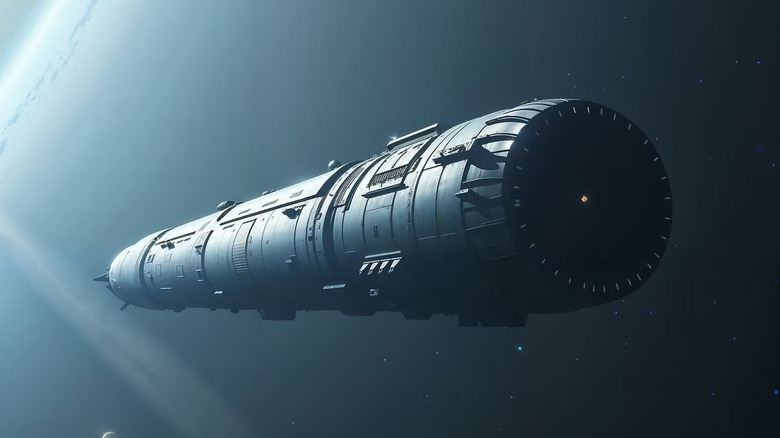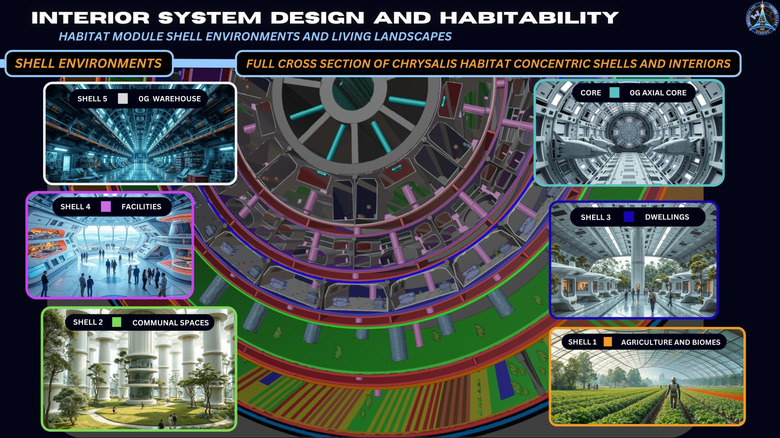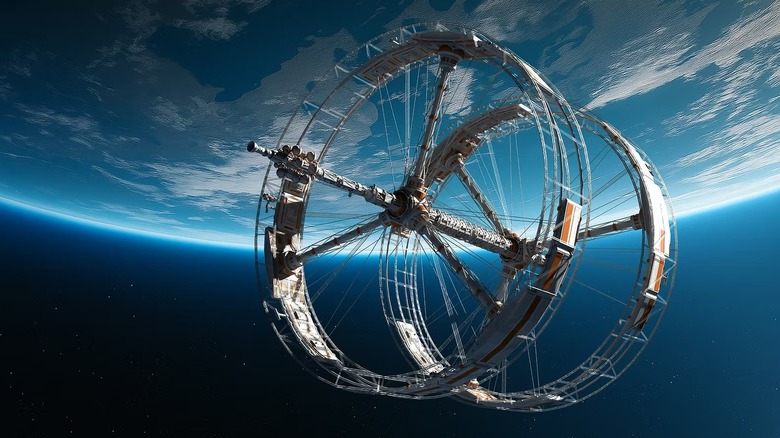This 36-Mile Spacecraft Would Take Humanity To The Stars – With No Way Back
Get ready for the ultimate road trip with no return ticket. Engineers and architects have unveiled a concept for a colossal spacecraft named Chrysalis, designed to be a self-sustaining world on a one-way voyage to Alpha Centauri. This is the closest star system to Earth, and it also contains the famous Proxima Centauri, the nearest star to Earth after the Sun.
The renders show off a massive, elongated cylinder composed of distinct, interconnected sections built along a central axis. Its end looks suspiciously like the afterburners of Sukhoi jets. But the graphics don't do justice to the vessel's size. It isn't just a ship — it's a mobile city that stretches an incredible 36 miles from end to end. The mission is to ferry up to 2,400 people across the 4.25-light-year (25-trillion-mile) void on a journey that would span generations. Its metallic structure is made up of multiple concentric layers built around a central core. There's no gravity in space, so to counteract the health effects, the entire structure would slowly rotate to generate artificial gravity.
The innermost layers are dedicated to life support, featuring farms, gardens, and even replicas of Earth's biomes like tropical and boreal forests. Moving outward, you'd find communal spaces like parks and libraries, followed by a layer of 3D-printed homes for the residents. There's even a dedicated industrial level that would handle everything from manufacturing to pharmaceuticals. The outermost shell acts as a massive warehouse for resources and equipment, a zone potentially run entirely by robots. Then there's the "Cosmos Dome," a vast observation deck where passengers could gaze at the universe passing by in a controlled, zero-gravity environment.
A 400-year voyage
Ultimately, passengers would arrive at Proxima Centauri b, a potentially habitable exoplanet. Once there, shuttles from the ship's core would eventually ferry them down. But the trip is estimated to take around 400 years, meaning the original crew would never see their destination. Their children and their children's children would be born, live, and die in deep space. That's quite the departure (literally) from the comfort of Earth, so to prepare for such habitation, the project proposes a wild trial run where the first generations of inhabitants would live in Antarctica for 70 to 80 years to adapt.
Onboard, life would be carefully planned. The designers aim for a stable population of about 1,500 people, with strict reproduction rules. Each person would have a three-year window between the ages of 28 and 31 to have up to two children. It'd be a highly complex society, so the ship's governance would have to look very different from that on Earth. The concept proposes a collaboration between human leaders and an advanced AI.
Can the Chrysalis be built today?
Let's pump the brakes for a second. The Chrysalis is an extremely fascinating and stunningly detailed vision, but it's purely a hypothetical one for now. The concept was the winning entry in the Project Hyperion Design Competition, in a challenge for teams to design a multigenerational starship using current and near-future tech, similar to the stuff being explored by NASA.
It's all in the realm of science fiction for several reasons. The entire craft would be powered by nuclear fusion reactors, a technology we have yet to perfect on Earth. Moreover, with its massive size comes incredible weight — a mind-boggling 2.4 billion tons, to be exact. This means the structure would have to be assembled at a gravitationally stable point between the Earth and Moon. The processes needed to pull this off are simply beyond our current capabilities.
That said, the competition spawned several other wild ideas beyond the Chrysalis. The runner-up was the WFP Extreme. It imagined a more compact ship designed around the principle of self-actualization and aimed to create an environment where future generations could solve problems and shape their own lives freely. The third-place concept, Systema Stellare Proximum, proposed a design inspired by the elegant simplicity of a jellyfish. Its boldest feature involves using a mined-out asteroid as a massive, natural shield against deep space radiation.


